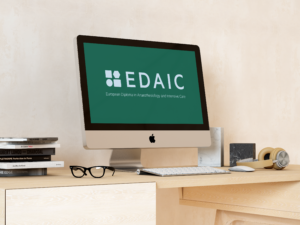Newsletter 2022
Newsletter January 2022: The Trainee Exchange Program (TEP) - The importance of different perspectives and approaches
Abdulvahap Oguz, DESAIC
Mardin Kiziltepe State Hospital, Turkey
avahapoguz@gmail.com
Throughout my education, I have been to many cities in the country where I live: Turkey. I also had the chance to be abroad during the period of my internship. Gaining all these experiences showed me the importance of different perspectives and their effects on our lives. I have never been abroad during my specialisation training, but I have been in two developing countries for a short period of time via a non-profit organization after being a specialist. Facilities and circumstances have determining effects on people’s approaches as much as their knowledge and vision.
Although there are some basic principles, anaesthesia management is not independent of resources.
It was important to see the operating room and intensive care unit environment in a developed country because the resources of places I have already been limited. When I think about it from this point of view, my admission to a developed country like Germany via ESAIC, even though for a short period of time, was an exceptional opportunity.
I have been to University Hospital Munster for one month. I wanted to benefit as much as I could and they provided me with an amazing experience.
I spent each week in different operating rooms to see their approaches to every kind of surgery. In conclusion, I had the opportunity to observe cardiothoracic anaesthesia, paediatric anaesthesia, neuro-anaesthesia and an intensive care unit.
I was lacking familiarity with various procedures: routine ultrasound-guided venous and arterial catheterisation, intraoperative transesophageal echocardiography, confirmation of double-lumen tube placement with flexible fiberoptic bronchoscope, flexible fiberoptic bronchoscope guided bedside dilational percutaneous tracheostomy in ICU, cell saver devices to avoid homologous blood products transfusion during and after cardiac surgeries, and thromboelastogram to understand the causes of coagulopathies. But the chance to see many technological developments used to make both anaesthesia and surgical procedures safer helped me a lot to cover all these topics.
Operating rooms were equipped with advanced technological devices. The use of this modern equipment affect the health care professionals’ decisions and guides them to evidence-based practice. With this method, only treatments or interventions that are shown to be necessary for the patients are performed. Possible undesirable effects of unproven interventions or treatments are avoided.
Health care workers, who were friendly and relieved the anxiety of the patients with their communication skills, made the process more bearable. They were not in a hurry. I realised the importance of having sufficient time for patients, especially when they are awake.
My experiences in University Hospital Munster gave me an opportunity to compare different anaesthetic approaches, procedures and health care systems. I realised discrepancies in anaesthetic management between the two centres. When I compare the host centre with my home town, surgical procedures were similar but there were so many differences in our aspects and approaches. It was invaluable for me to meet and spend time with foreign anaesthesiologists and residents. It broadened my horizons, expanded my knowledge.
I will pass all my experiences on to colleagues from my home town and it will inevitably have effects on my home hospital, too. It is a new opportunity for us to improve our attitudes. In my home town, lack of health care workers and the multitude of surgical interventions mean care does not reach the same standard as I saw in Germany. We need to change our attitudes towards the patients and I am going to pay more attention to this issue.
Inequalities within the countries in the world, failure to benefit from resources efficiently and fairly, diversity in the background and vision of the communities and a lot of other factors determine the enormous differences in working environments. It is not easy to fix. There may be limitations to what we can achieve without financial and administrative solutions to cover the necessary equipment, but I believe in human resources as the most advanced equipment is still human power. It is possible to do at least something without some modern equipment but impossible to do anything without human resources in a safe way. Being aware of the things that can be done despite difficulties is the only way to be hopeful for the future.
Ursula K. Le Guin said ‘’you can not always have what you want, or even what you need, because there is not enough’’. So, we should be realistic, aware of our limits and keep our hopes alive for the future at the same time. We should determine approaches according to the conditions we are in and revise our approaches to the new reality when conditions change.
I am very grateful to ESAIC and University Hospital Munster for giving me the opportunity to experience this invaluable privilege. Special thanks to Els Sung, for her help during the whole process.










